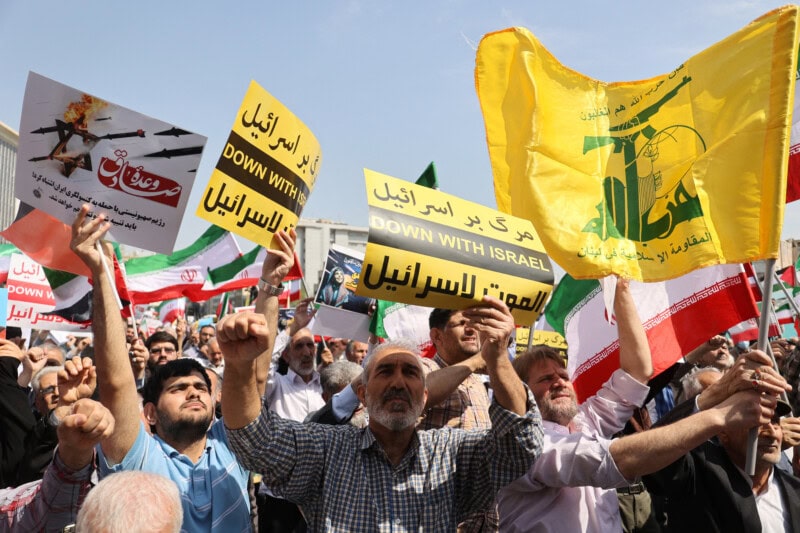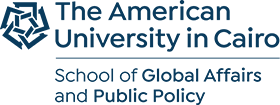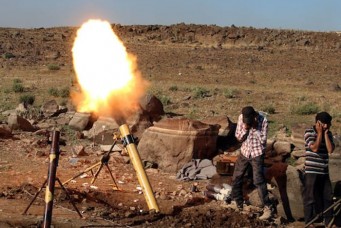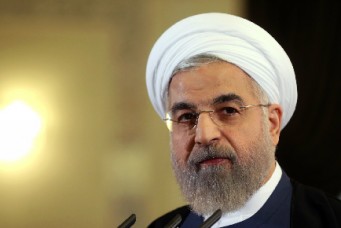Duel with Israel is Turbocharging Iranian Nationalism
There’s only one ingredient in the Iranian people’s worldview that has not been outperformed by a disastrous mélange of crackdowns on civil liberties, economic maladies, corruption, and the specter of an all-out confrontation with Israel: nationalism

The October 26, 2024, Israeli airstrikes on 20 sites across Iran reportedly dismantled its air defense systems with some reports claiming that it would take at least a year for the Islamic Republic’s ballistic missile capability to be restored. Although authorities in Tehran in their habitual projected defiance downplayed the extent of damages, their lack of a retaliatory response after three months relays a deeper message about the country’s current state of military strength. For a theocracy that has routinely ignored the national interest when carving out its foreign policy, this restraint is not one of rationality.
Still, the spectacle of a broader conflict with Israel after its large-scale attacks on three Iranian provinces—with its most visible effect being the killing of four members of the country’s popular Army (Artesh)—has already produced a rally-round-the-flag effect. A ruling establishment that is widely resented, including by its own loyalists, is receiving renewed sympathy at home, and it’s likely that the threat of territorial disintegration will extend the lifespan of the Islamic Republic beyond what the conventional regime change doomsayer may predict.
By no means, however, does this denote a semblance of national unity that is holding the pieces of a fragmented Iranian society together.
Things have indeed gotten worse during what appears to be the twilight of the leadership of Ayatollah Ali Khamenei. The “revolutionary” parliament, as the senior cleric once dubbed it, is racing full-speed toward paralyzing the administration of President Masoud Pezeshkian it disfavors as a rival. Environmental crises are metastasizing, and many people cannot even be assured of continued access to running water and electricity in a rarely cold winter. Social divisions, meanwhile, are allowed to fester and deepen.
While Khamenei is alive and busy delivering his occasional fiery sermons, the very competition over who succeeds him as the next lifetime chieftain of the ‘nezaam’ has created a climate of McCarthyism. Different revolutionary factions and their stakeholders are on frequent revelation rampages, spilling the beans on each other as foreign agents who are plotting to overthrow the state. On social media and in the public sphere, charges of treason are now being laid bare but no longer only directed at pro-reform figures and political influencers sympathetic to the West.
The U.S.-educated former foreign minister Javad Zarif has been the obvious target—lambasted by radical MPs who are fighting to dislodge him as vice-president for strategic affairs on account of his two children being born in the United States when he was a diplomat there. But the dominant trend is the ultra-conservative, reactionary forces with deep establishment ties getting a taste of their own medicine, facing accusations by their similarly hidebound rivals of being fifth columnists denting the Islamic Republic from within.
Some names on the receiving end of the counterintuitive accusations include President Pezeshkian’s election rival Saeed Jalili. Many in Iran wonder why he remains in the tiny sliver of top government officials who have never been blacklisted by any sanctioning country despite his radical political stance and incendiary rhetoric. In the recent election, he was called the poster boy of the “Iranian Taliban”. British-educated political scientist Sadegh Zibakalam, who was last year fired as a Tehran University professor, said in an interview before the presidential run-off that he believed Jalili’s puritanical beliefs were no different from those of Osama bin Laden and Abu Bakr al-Baghdadi.
There is also Ali-Akbar Raefipour, a 40-year-old conspiracy theorist routinely marketed by the Islamic Revolutionary Guard Corps (IRGC) as a “maestro” of social theory. He has a bachelor’s degree in accounting and no social sciences background. Thanks to his ties with the Guards, he is regularly provided with the resources he needs to tour cities and towns, giving misinformation-laden lectures in halls stacked with Basij militia members, powered by generous publicity opportunities and media fanfare.
He said in a 2021 speech that origami-inspired foldings of different U.S. dollar bills show the stages of the 9/11 attacks, which he said were predicted when the greenbacks were first printed. He is also on the record saying that jeans in essence originate from the “genies” and are aimed at corrupting youth. Raefipour faces accusations of being a foreign agent by his critics.
The Political Precipice
These mudslinging campaigns scratch the surface of a deteriorating political situation and are all happening as the drums of war with Israel can be heard echoing more loudly than ever. Iran is also on the edge of economic collapse. As of this writing, the U.S. dollar is traded for 815,000 Iranian rials, meaning that a senior administrative worker’s monthly earning doesn’t exceed $300 unless they are employed in agencies like the Ministry of Petroleum. And it’s not only that the national currency is worthless in comparative terms. That Iran’s rial is considered the world’s weakest currency is already a recipe for financial slump, but it also means an ailing command economy needs to be frequently manipulated through the infusion of liquidity and state regulation of prices so that institutions can subsist and avoid insolvency.
To make matters worse, Pezeshkian’s pro-reform administration is grappling with a parliament whose speaker was his presidential opponent and is now seeking revenge for the election defeat he suffered. The retaliation project, coming in the form of a push for legislation to double down on hijab restrictions, is pursued by the Majlis speaker Mohammad Baqer Qalibaf. In this pursuit, he is being assisted by the other unsuccessful presidential contender Jalili, who as the mastermind of the far-right Front of Islamic Revolution Stability (Paydari Front), holds sway over a large bloc of MPs.
While Iran’s downward spiral toward becoming a failed state is apparently playing out in real time, the ruling elite is benefiting from the latent nationalistic sentiments that have contributed to the protection of the nation’s territorial integrity since 1979. The Islamic Republic often proudly takes credit for not having lost “an inch” of Iran’s soil since the Iraqi invasion in 1980 under Saddam Hussein, only one year after the revolution came into being. Before that, in the 19th and 20th centuries, Iran had lost different swathes of its territory to invading powers such as the Soviet Union and Britain, including parts of what constitutes the Republic of Azerbaijan, Armenia, Georgia, Afghanistan and Bahrain today.
But absent a prominent nationalism that spans the gamut of unlimited ideological and cultural differences between Iranians, a poorly-trained military in the wake of the turmoil of the revolution couldn’t have saved the country from the invading Iraqi army.
Today, a few things have changed, but the Islamic Republic may still end up being the beneficiary of its miscalculations. First, the robust army that the outgoing Shah had left to the Islamic Republic in 1979, equipped with the best of U.S. and European technology, has been decimated under the sanctions regime in the years that followed. Furthermore, the popular support that the nascent Islamic Republic enjoyed in tandem with the desire for transition away from the pro-West monarchy doesn’t exist anymore.
According to highly-contested official figures in the June 2021 presidential election, the late President Ebrahim Raisi won a total of 18.02 million popular votes when the turnout stagnated at a historic low of 48.8% despite entreaties by the supreme leader, urging people to cast a ballot. The dexterously-engineered race featured Raisi against three underdogs who had zero chances of even gaining a significant minority of votes. Ironically, Raisi won against his main rival, the invalid ballot, and secured 62.0% of the total votes cast. The invalid ballot came second with 12.9%.
Raisi’s ally Jalili became his to-be heir-apparent facing off against Pezeshkian in July 2024 and was even endorsed by the late cleric’s household, as well as his administration officials who were tasked with administering the election. Never mind the fact that they explicitly breached their constitutional commitment to neutrality. Despite this unusual setup, clearly signaling that Jalili had some sort of divine endorsement from the office of supreme leader, the ultra-conservative frontrunner bagged a total of only 13,538,179 votes in a run-off. In the first round, which saw an abysmal turnout of 39.93%, to the degree that even Khamenei complained about it publicly, Jalili came second with 9.4 million votes. It was a frigid competition at a time when nobody expected that Pezeshkian’s reform platform could garner so much momentum as to animate a base of young, middle-class Iranians who were too disappointed about the nation’s conditions to even show up at the polling stations.
The takeaway from these conservative voting trends coupled with the startling low voter turnout is that even the hardest-core supporters of the Islamic Republic are having second thoughts about whether there’s any point in supporting the establishment. To those government stalwarts who are inclined to think more critically, warming up electoral races that are increasingly coming across as shows of political competition has become a self-deprecating commitment.
When almost nothing changes for the better, and even state-sanctioned corruption is not appropriated equally, cheerleaders rooting for an incorrigible authoritarian framework lose their motivation at some point.
But the pulse of Iranian society is one characterized by the IRGC-affiliated vigilantes, Basij militia and other radical factions of the establishment keeping the flames of a toxic rhetoric of revenge alive, especially on social media. In the meantime, the typically reckless statecraft of the Islamic Republic doesn’t foreclose the possibility of an all-out military conflagration if it strikes back at Israel. As such, the unique form of Shia nationalism that’s gestating in the interim promises to work in the clerics’ favor.
To be sure, popular disdain for the rigidities of the Islamic Republic, including the clerical apparatus and its ossified bureaucracy still dominate. But people are growing more fearful of a future in which they have to endure the scars of another foreign invasion—while even the existing peace time in the world’s fifth most resource-rich country doesn’t entitle them to uninterrupted provision of water, electricity and heating gas. This means they may be more receptive to ignoring their aversion to the clerics and instead support stability from whoever is capable of providing it.
Furthermore, the streak of external crises, which the Islamic Republic has often played an active role in manufacturing, has also been one of the reasons it has outwitted the chronic corruption and maladministration of its executives. When some daily basics are secured for a relative majority, the populace opts for the maintenance of the existing order rather than the nebulous optics of something better that may never come to pass.
Defiance as Propaganda?
In the weeks leading to Israel’s debilitating October 26 retaliation, Tehran had engaged in bluster and bravado, in a bid to allay public fears of all-out war.
On October 1, it responded to Israel’s killing of three influential figures in the so-called ‘Axis of Resistance’ who were intimately linked to and supported by Tehran—Hezbollah chief Hassan Nasrallah, IRGC general Abbas Nilforoushan, and Hamas political leader Ismail Haniyeh, who was assassinated while visiting the capital— by firing 200 ballistic missiles against Israel.
On October 4, when Supreme Leader Ali Khamenei delivered his first Friday prayer sermon in Tehran in almost five years, his gesture was lauded as a rare act of defiance. Cynical social media users reacted scornfully, asking why the heavily-protected leader of a regional power should tout praying in his capital city as a bold move. Others said his choice of the grand mosque of Tehran, a massive open-air space, and the lineup of his four sons attending the event, was intended to send a message, especially as rumors had circulated that Israel would probably strike the mosque and kill all the high-ranking officials present, including the ayatollah.
There were even user-generated illustrations on Instagram and X (Twitter) that likened him to Cyrus the Great, the mighty Persian king of the 5th century BCE who emancipated the Jewish people from Babylonian captivity. The analogy, however, was a bit of a stretch for a cleric who espouses conspiracy theories and anti-Semitic rhetoric. But clearly, the leader had patched up some of his waning charisma. At least on that day, his ardent fans, as well as many others who hadn’t gone to the Friday prayers for years, relied on him as their congregational prayer imam.
An Iran-based journalist who supports regime change and has published explicitly anti-government posts on their personal pages told me that the emerging support for Khamenei is only intrinsic at this moment of crisis, and this may even boost the chances of his son Mojtaba to succeed him more easily without facing resistance from the Assembly of Experts.
“If people think like that, then it means there’s no other way. Bifurcation at this time isn’t in the interest of the nation, and people inevitably throw their weight behind him [Khamenei],” the journalist said in a brief conversation we had two months ago. “At this time, he is the one who holds the steering wheel, and there’s no option but to trust him.”
The perspective of anti-regime dissidents living in Iran doesn’t closely mirror that of their diaspora counterparts, however. The latter believe it is acceptable for the nation to suffer the “chemotherapy” of sanctions and embrace bombs dropped by foreign countries to be eventually freed of the ruling theocracy.
More than anyone, the Iranian people wish to experience freedom after decades of strangulation. While the Islamic revolution in 1979 promised independence and freedom, it has offered none since. In governance terms, many Iranians feel their country is becoming a vassal state of Russia. In measures of civil liberties, no domain of personal freedoms has remained impervious to government infringement.
It’s not just that Iranians are badgered into dressing how the establishment wants, they are also warned against having open kitchens in their apartments—such spaces expose the “concealables” of the household, i.e. women, clerics say. And while there are shanty towns surrounding the sprawling capital city Tehran that are wrestling with endemic poverty, the nation’s shrinking resources go to inflating proxies in the Levant and beyond.
Still, Iranians don’t believe the cost has to be submission to a military adventure by their own government or invasion by another state. This is why they are, at least now, less likely to feel they are either willing or equipped to challenge the leadership—and obviously because they are drained by periodic crackdowns.
The same way the theocracy in Tehran has been lucky to be contested by a divided, confused diasporic opposition, it is also reaping the unintended benefits of the Iranian people’s patriotic love of their homeland. In this latter instance, like the former, the Islamic Republic’s survival is being reinsured without it having paid any premiums.




